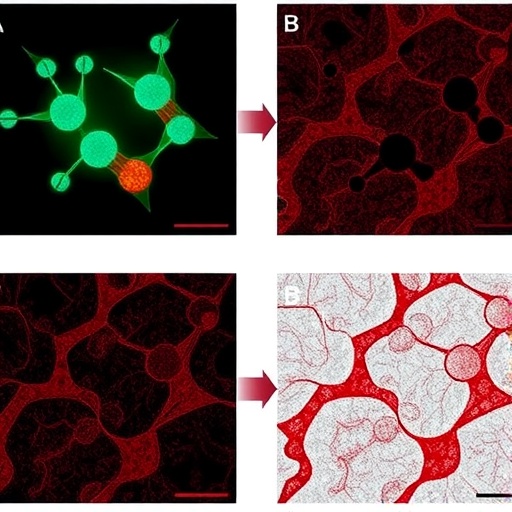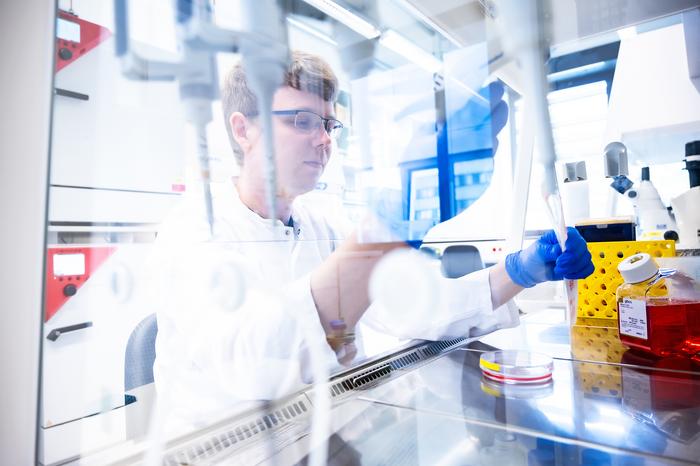Professor Neil Johnson, a physicist at the University of Miami College of Arts and Sciences, is interested in complex networks. He studies how fast-moving packets of information spread and interact in large networks like stock markets and the human brain, and what makes the overall system then behave in ways that are unexpected.
He compares his research to understanding traffic. He wonders: How do traffic jams appear and why does this happen in the first place?
"It's got to be more than just bad luck," he said.
Johnson's job involves using high-resolution data to analyze how extreme system behaviors sometimes surface that are not just freak accidents–like a sudden movement in the stock market or a seizure in the brain.
In a study published in the esteemed academic journal Science, Johnson used electronic stock exchange data to explore what happens when delays are added to parts of fast-moving networks that operate quicker than the blink of an eye.
The question is important, he says, because U.S. financial regulators recently decided to allow an exchange network to intentionally introduce a delay to their market in an effort to make the market fairer for participants.
Johnson said the idea is similar to adding a speed bump on a highway so that all cars -from the Ferraris to the Priuses – have the same delays. Except in the case of the stock market, the delay is 350 microseconds.
With one million microseconds in one second, you'd think that's no big deal, right?
Johnson says that the data and analysis published in his paper prove otherwise.
"The fact is, there is still no scientific understanding of what the system-wide impact of such sub-second delays will be," he said.
Returning to his traffic analogy, Johnson said the problem is that this lack of scientific understanding forces regulators to consider the impact, like speed bumps on a road.
Except, in that case, Johnson says, we are able to monitor traffic on the road and figure out whether the speed bumps work. Maybe we determine they need to be spaced out more, or that they make no change whatsoever. Point is, there is a way to stop and assess their impact.
But that is not the case with systems like the stock market that are moving a million times faster than the one second or so it typically takes a human to react.
"When things are moving that fast in a network system which is that complicated, there is no human intuition for how you should regulate the system," said Johnson.
To illustrate this point, Johnson studied raw data from the major electronic exchanges in the New York City area, a global financial hub. What he found was interesting: Even without delays added by humans, there already exist natural sub-second delays in these systems that can become correlated in such a way that they cause unexpected and extreme system behaviors from time to time.
"If delays already happen and we add more delays, are we sure we know what will happen?" he asked. The answer, he said, is unclear.
What is clear is that if something were to go wrong, the system would be operating so fast that humans wouldn't be able to pull the plug. This could be potentially disastrous and result in an avalanche effect that could crash a market, cause a drone to misfire, or even cause a driverless car to suddenly veer off course.
At the same time, there is a lot to be gained from an improved understanding of how such microscopic delays impact behaviors at the system level. For example, it may help shed light on understanding neurological disorders, given that the onset of consciousness occurs on the scale of thousands of microseconds. Indeed, recent studies have shown that children with autism are slower to integrate stimuli from different senses.
"You wouldn't think 350 microseconds is a big deal, but it can be," Johnson said.
###
Johnson's study, "To slow or not? Challenges in subsecond networks," appears in the February 24, 2017, edition of Science. The study is funded by the National Science Foundation and the Air Force Office of Scientific Research.
Media Contact
Alexandra Bassil
[email protected]
305-284-1092
@univmiami
http://www.miami.edu
############
Story Source: Materials provided by Scienmag





